Posts Tagged ‘D-Day’
Operation Colour Scheme. The Fire Service’s Top Secret D-Day Mission.
2024 marks the 80th anniversary of D-Day. On 6th June 1944, the Allied Forces launched one of its biggest military operations – they came by land, sea and air and would eventually bring about the liberation of Europe and the end of World War II.
But as D-Day was being planned, more and more equipment was stockpiled in the South of England and needed to be protected, and that’s why the National Fire Service Commanders were tasked with a top secret mission of their own – Operation Colour Scheme.

Operation Colour Scheme: Protecting the Overlord Invasion’s Infrastructure
Operation Colour Scheme, a little-known but vital aspect of the Fire Service’s activity in World War II, involved moving 11,000 firemen and women and over 1,200 fire fighting vehicles to the South of England to protect resources being stored in rural areas.
In 1943, the German bombing offensive was at a lower level and so it was decided that fire fighting resources could be moved from areas in the North and the Midlands to areas in the South to cover sites that now required a higher level of protection, including:
- Logistical supply sites
- Harbours linked to the D-Day invasion – most notably coastal areas of East Sussex and an armada of ships in the lower reaches of the Thames
- Ammunition dumps
- Petrol pipe lines
The Colour Scheme – and what each colour meant
And to aid planning, England and Wales were split into 12 regions – with each region given a colour to represent the level of risk each region faced:

War Relics Forum
- Regions shaded Purple and Blue needed to be reinforced to above their maximum strength – the Purple regions were most impacted
- Regions shaded Green needed to be reinforced up to their maximum strength
- Regions shaded Brown were areas from which resources could be drawn from to provide for Purple, Blue and Green regions
The crucial role of the Fire Service during World War II
The war years proved to be the busiest for our Fire Brigades with fire fighters on the front line protecting communities during Air Raids and as part of Operation Colour Scheme.
Fire fighters were issued with one basic uniform; a steel helmet, rubber boots, trousers and waterproof leggings – although shortages saw some stuck with just Post Office uniforms!
The first air raid on London took place on 7th September 1940 and this would mark the start of The Blitz – where London endured bombings for 57 nights in a row. Most of the air raids took place at night, meaning fire fighters spent long hours extinguishing fire or dealing with explosions.
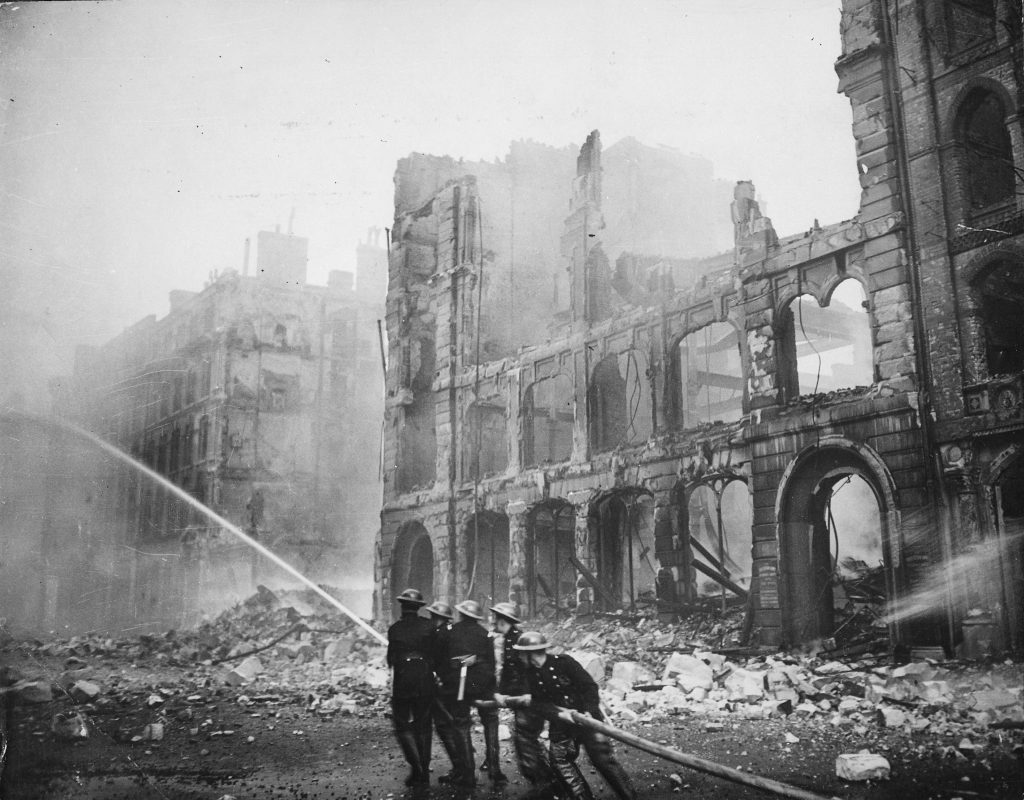
New York Times Paris Bureau Collection, Public domain, via Wikimedia Commons
In the first 22 nights of air raids, fire fighters had fought nearly 10,000 fires – and for many, this was their first experience of fire fighting…
And by 1943, over 70,000 women had enrolled in the National Fire Service, many becoming fire watches and drivers and managing the communications network.
Britain’s Prime Minister, Sir Winston Churchill honoured these great efforts and once said that the fire service “were a grand lot and their work must never be forgotten”.
The BRAND NEW History of the Fire Brigade 50p Collection
Issued to mark 200 years since the establishment of Britain’s first Municipal Fire Service, The History of the Fire Brigade 50p Collection shares the story of two centuries of heroic service.
Included in the set is the 1934 London Fire Brigade 50p Coin which depicts a World War II Fire Engine – a Dennis Chassis with an extendable ladder – in front of a background representing the city during The Blitz.

Each coin has been officially authorised by Buckingham Palace and King Charles III to pay tribute to the unsung heroes who have battled flames and saved lives for centuries.
A variety of specifications are available to order today from The Westminster Collection. Click here to view the COMPLETE range >>
🎖️ Honouring Heroes: The Enduring Legacy of D-Day Veterans
As we near the 80th anniversary of VE DAY, it’s a poignant moment to reflect on the courage and sacrifice of those who served during World War Two. The Westminster Collection, in partnership with the Royal British Legion, brings to light the stories of four veterans whose bravery exemplifies the spirit of that day. Their personal accounts offer us a window into the past, ensuring that the lessons and legacies of World War Two, are never forgotten.


Bernard Morgan – The Young Visionary of Gold Beach
Bernard Morgan was only 19 when he landed on Gold Beach as an RAF sergeant, making him one of the youngest sergeants to participate in the Normandy invasion. His task began perilously as he manned a Bren gun aboard his landing craft at 3 AM, ready to fend off any aerial attacks. The harsh reality of war struck him deeply as he witnessed the bodies of Allied troops upon his landing—a sight that profoundly affected him and stayed with him for the rest of his life. Bernard still possesses a significant piece of history: the original telex announcing the German surrender, a document he kept secret for over 50 years. His reflections on the importance of remembrance, particularly through the symbol of the poppy, resonate with his belief in acknowledging the sacrifices made by his fallen comrades.
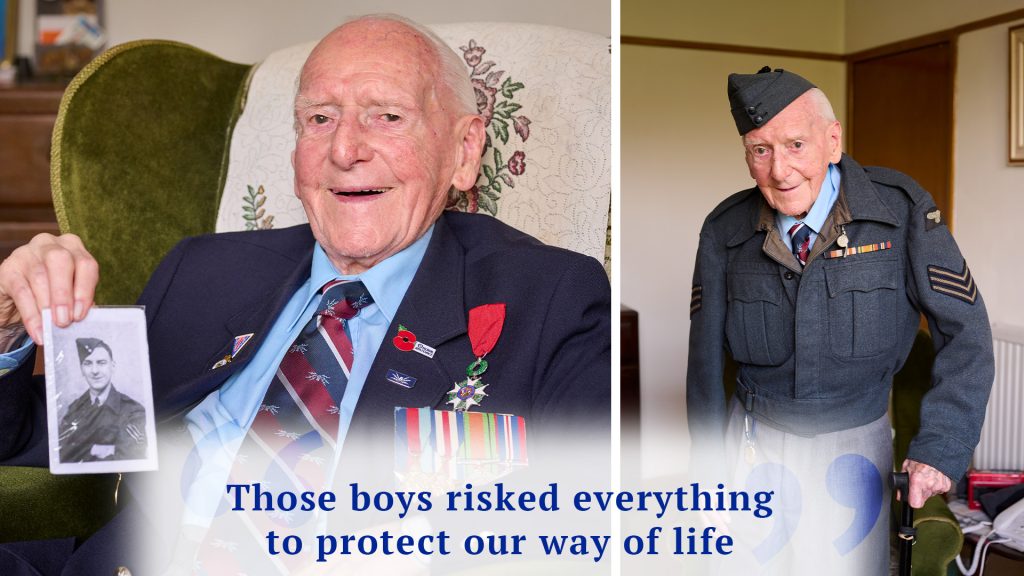
Albert Price – From Operation Smash to Normandy Shores
Albert Price’s wartime journey began with the 4th/7th Royal Dragoon Guards in 1942, two years before he would set foot on Gold Beach as an 18-year-old gunner. His experience in Operation Smash at Studland Bay, a rehearsal that tragically cost lives, foreshadowed the brutal realities of war he would face. On D-Day, Albert landed amid a storm of artillery, a memory etched in his mind for its intensity and the pride he felt in being part of such a monumental event. The personal losses he endured, and his skirmish with the 12th Panzer division, where he witnessed the severe injury of his driver, underscore the brutal costs of war.
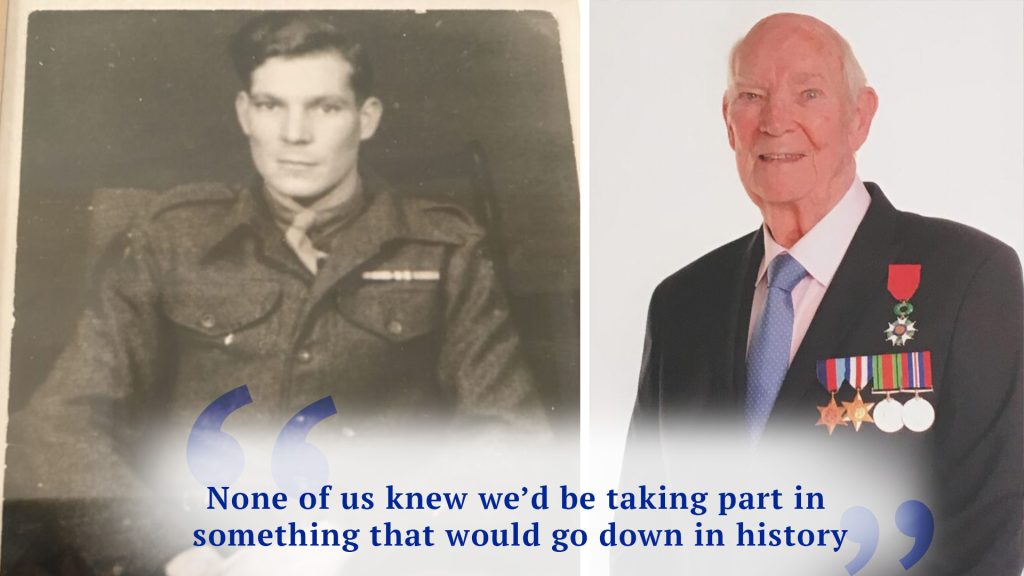
Jack Mortimer – The Reluctant Hero of Sword Beach
Jack Mortimer vividly recounts the daunting scenario as he landed on Sword Beach, surrounded by a massive assembly of ships, vehicles, tanks, and artillery. His role as a driver and dispatch rider for the 12th Ordnance Beach detachment thrust him directly into the line of fire, navigating through a storm of shells to advance towards Caen. The threat of snipers and the sight of numerous casualties painted a stark picture of the day’s grim realities. Despite the heroism he displayed, Jack humbly remembers the fallen as the true heroes and shares the emotional burden of returning to the beaches where he saw so much loss.
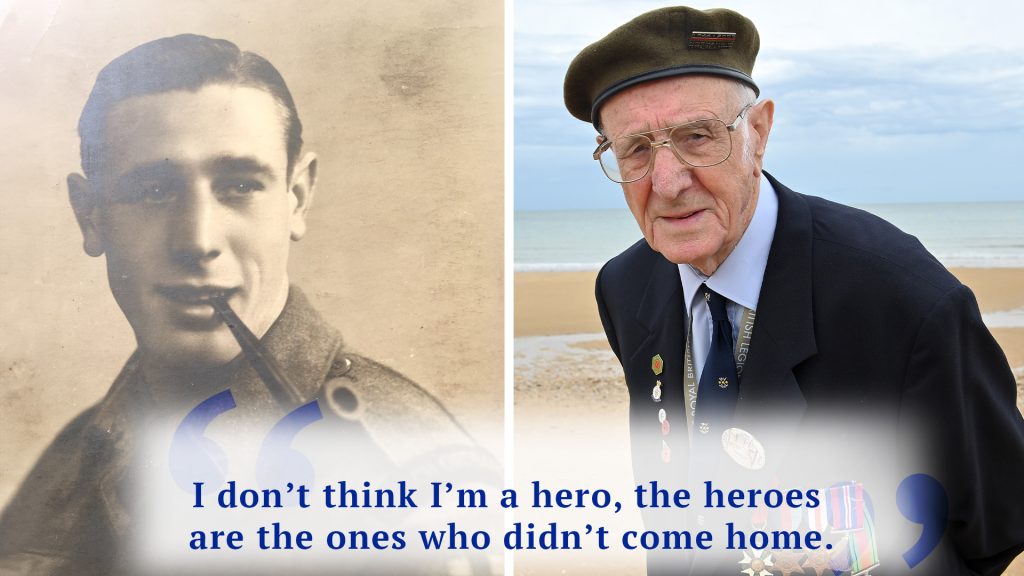
Joe Mines – The Unseen Bravery of Mine Clearing
Joe Mines’ story of being thrust into the role of mine clearer due to his surname is both ironic and tragic. Tasked with clearing mines from Ver-sur-Mer using only bayonets, Joe faced the terrifying prospect of triggering mines intended to cause maximum damage, like the wooden Schu-mines or the deadly S-mines, which projected ball bearings at waist height. The vivid memories of his comrades falling shortly after landing highlight the random and brutal nature of war. His later years spent promoting the Poppy Appeal helped him find a sense of pride and healing, recognising the value of his survival and contributions.
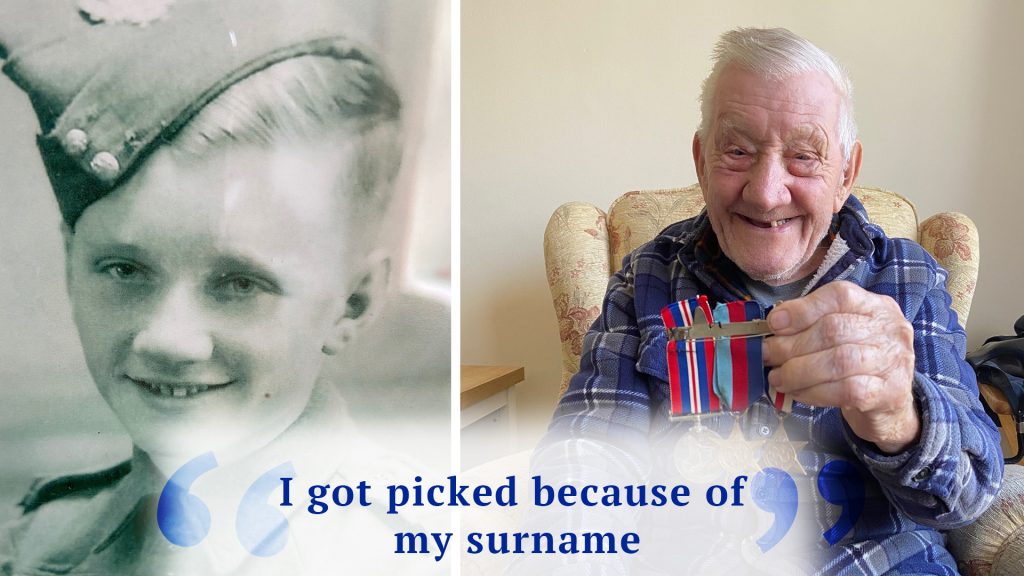
Reflecting on Their Legacy
The personal stories of Bernard, Albert, Jack, and Joe not only provide a human perspective to the historical events of World War Two but also emphasise the broader themes of bravery, sacrifice, and the enduring impact of their actions. As we commemorate the 80th anniversary of VE DAY, these personal accounts remind us of the high price of freedom and the importance of peace.

These veterans represent a generation whose courage and resilience shaped the course of history. Let us honour their memory and ensure that their stories inspire future generations to value peace, remember the past, and uphold the virtues of bravery and sacrifice.
The Rare Piece of WWII History Few People Know About…


As we approach the 80th anniversary of D-Day in June 2024, enthusiasts and collectors alike are eagerly seeking out military commemoratives from the era.
Amidst the rush, there exists a rare gem that only a select few are aware of, let alone possess.
It is the Hawaii Overprint Emergency Banknote issued between 1942-1944, and The Westminster Collection have a handful available today – flown to the UK straight from Hawaii.
Read on to learn the fascinating story, what makes them so scarce, and how you can secure one.
USA – World War Two
During the tumultuous years of World War II, the United States government found itself in a precarious position following the devastating attack on Pearl Harbor.
With deep concerns looming over the possibility of a full-scale invasion of Hawaii by Japan, urgent measures were needed to safeguard the American economy from potential exploitation.
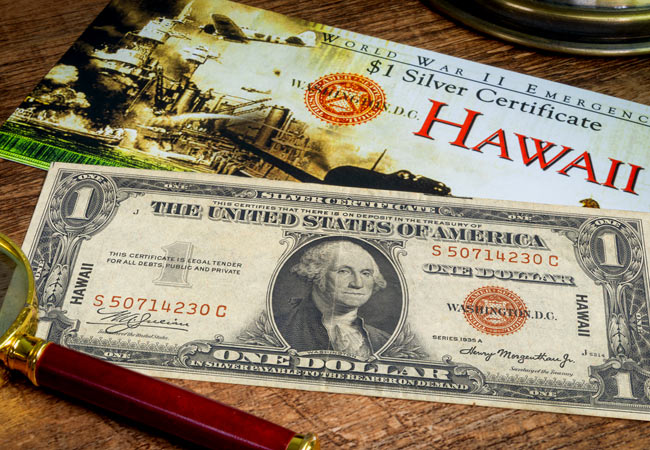
To counter this threat, the US government took swift action, issuing emergency banknotes specifically for use in Hawaii. These $1 Silver certificates bore distinct markings, featuring a brown seal and prominent “HAWAII” overprints on both the front and back.
This unique design served a crucial purpose: in the event the notes were seized by enemy forces, they could be repudiated, rendering them worthless thus spoiling attempts at economic sabotage.
A Rare Piece of Military History
Issued only for two years between 1942 and 1944, these emergency banknotes are exceptionally rare, with very few surviving examples still in existence today.
Their scarcity means they rarely make appearances on the secondary market, making them highly sought-after among collectors and historians alike.

Less than 25 Available
Here at The Westminster Collection, we have managed to secure a limited number of these extraordinary artefacts.
In fact, there are less than 25 available for collectors in the UK, travelling all the way over from the States.
This represents a rare opportunity to own a piece of history that encapsulates the resilience and ingenuity of a nation during one of its darkest hours.
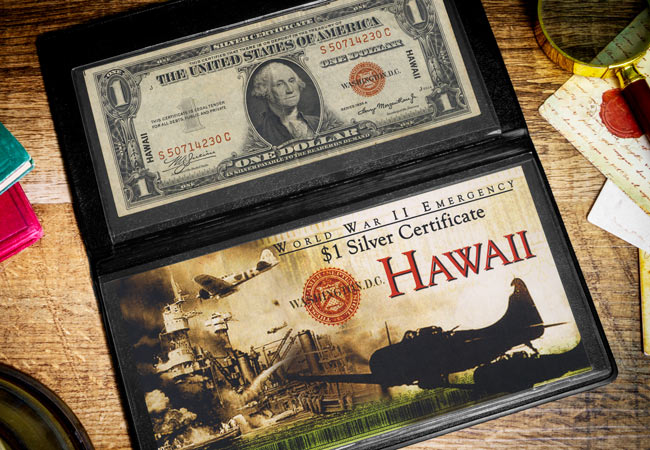
How to Secure Yours…
These WWII emergency banknotes offer a tangible connection to the past, serving as a poignant reminder of the unwavering spirit that prevailed during a time of global upheaval.
Don’t miss your chance to own a piece of this remarkable history.
